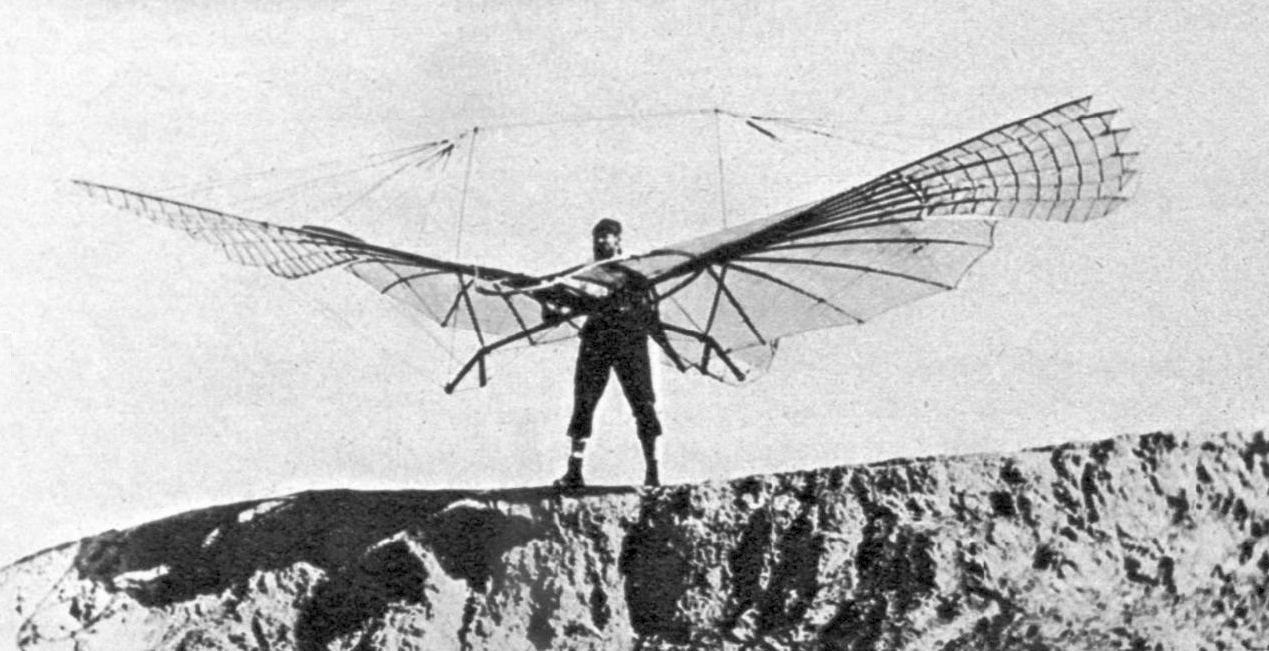The only person able to fly
23 May 1848, Anklam Prussia, born and raised with his siblings, worked together on technical, social, and cultural projects. Then they started to study the flight of birds, dreaming with the idea or the fiction of human flight. After years of other studies in other fields and life situations, he got the idea for his famous book “Birdflight as the Basis of Aviation” in 1889. This man is Otto Lilienthal.

Otto Lilienthal was a true pioneer of aviation, engineer with a plenty of inventions and artifacts. He came up with thoughts about machines, boilers and steam engines that he made them true. The contributions in aviation goes from gliders to planes, so the path of the heavier-than-air flight was emerging.
The theory of flight started to be in realistically true with the experimental flight he made from an artificial hill he built near Berlin and from natural hills. With the help of his brother Gustav, Lilienthal made over 2,000 flights in gliders starting in 1891 with his glider version The Derwitzer Glider.

Carl KassnerThis model became a successful design with the capacity of carrying a person. In such a way inspiring the mind of others. The inventions include flapping wing models (ornithopters). He discussed the basic principles of the curved wing, and made other researches about the flight of birds like storks, used engineering methods for describing the aerodynamics of the wing of that bird, creating aeronautical data.

In 1893, in the Rhinow Hills, he was able to achieve flight distances as long as 250 metres. His total of five hours flying time was important in aviation history.

In 1895 engineers and scientists from around met with Lilienthal, among these notables were S. P. Langley, Secretary of the Smithsonian Institution in Washington and N. J. Shukowski, an aerodynamics expert from Moscow.
On 9 August 1896, Otto Lilienthal made several flights with his Normal Glider, when flying the fourth flight of that day, the glider pitched down quickly, he fell from a height of about 15 meters. Lilienthal had a fracture of the third cervical vertebra and died on 10 August 1896.
The more than 20 years of studies served as aeronautical data and is considered “the beginning of aerodynamics”. This was an inspiration for the Wright Brothers.
References:
http://www.lilienthal-museum.de/olma/ewright.htm
Cover Photo:
The Normal Glider/ lilienthal-museum.de
You might also like:
- It Is Not Just A Duct Tape
- South Korean Air Force KF-16 Jets Accidentally Drop Bombs on Village, Injuring 15
- What Are the Quietest Seats on a Plane?
- Lufthansa Confirmed as Boeing 777X Launch Customer
- Which Airlines Are Evacuating People From Afghanistan?
Discover more from Aviation for Aviators
Subscribe to get the latest posts sent to your email.














Post Comment